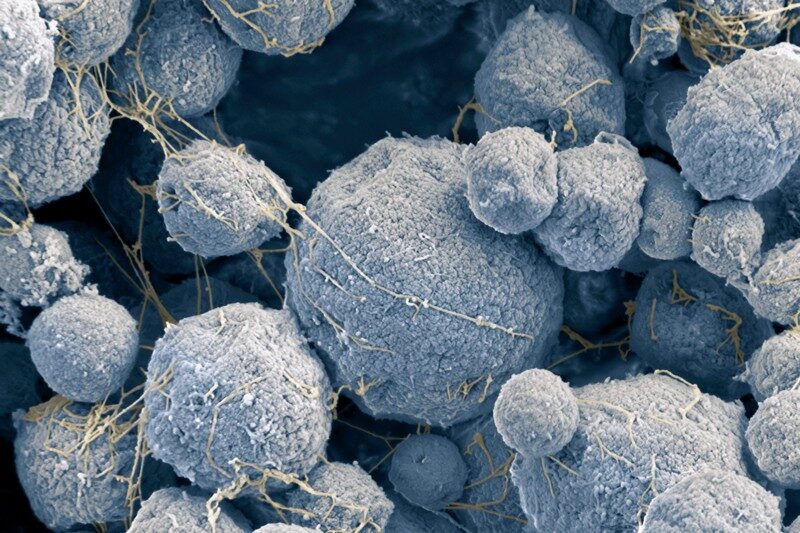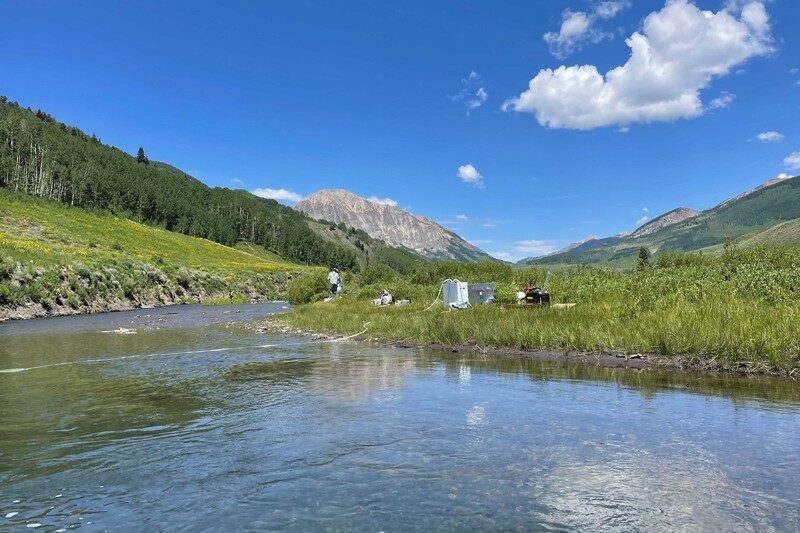
These extra-long DNA strands, which the scientists named in honour of the aliens, join a diverse collection of genetic structures — circular plasmids, for example — known as extrachromosomal elements (ECEs). Most microbes have one or two chromosomes that encode their primary genetic blueprint. But they can host, and often share between them, many distinct ECEs. These carry non-essential but useful genes, such as those for antibiotic resistance.
Borgs are a previously unknown, unique and "absolutely fascinating" type of ECE, says Jill Banfield, a geomicrobiologist at the University of California, Berkeley. She and her colleagues describe their discovery of the structures in a preprint posted to the server bioRxiv1. The work is yet to be peer-reviewed.
Unlike anything seen before
Borgs are DNA structures "not like any that's been seen before", says Brett Baker, a microbiologist at the University of Texas at Austin. Other scientists agree that the find is exciting, but have questioned whether Borgs really are unique, noting similarities between them and other large ECEs.
In recent years "people have become used to surprises in the field of ECEs", says Huang Li, a microbiologist at the Chinese Academy of Sciences in Beijing. "However, the discovery of Borgs, which undoubtedly enriches the concept of ECEs, has fascinated many in the field."
Their vast size, ranging between more than 600,000 and about 1 million DNA base pairs in length, is one feature that distinguishes Borgs from many other ECEs. In fact, Borgs are so huge that they are up to one-third of the length of the main chromosome in their host microbes, Banfield says.
Banfield studies how microbes influence the carbon cycle — including the production and degradation of methane, a potent greenhouse gas — and, in October 2019, she and her colleagues went hunting for ECEs containing genes involved in the carbon cycle in Californian wetlands. There, they found the first Borgs and later identified 19 different types from this and similar sites in Colorado and California.
Borgs seem to be associated with archaea, which are single-celled microorganisms distinct from bacteria. Specifically, those Banfield and her team have discovered are linked to the Methanoperedens variety, which digest and destroy methane. And Borg genes seem to be involved in this process, says Banfield.
Scientists can't yet culture Methanoperedens in the laboratory — an ongoing challenge for many microbes — so the team's conclusions that Borgs might be used by the archaea for methane processing are based on sequence data alone.
"They've made an interesting observation," says systems biologist Nitin Baliga, at the Institute for Systems Biology in Seattle, Washington. But he cautions that when researchers sift through fragments of many genomes and piece them together, as Banfield's team has done, it's possible to make errors. Finding Borgs in cultured Methanoperedens will be necessary for the finding to be considered definitive, he adds.
Costs and benefits
Assuming Borgs are real, maintaining such a massive ECE would be costly for Methanoperedens, Banfield and colleagues say, so the DNA structures must provide some benefit. To learn what that might be, the researchers analysed the sequences of hundreds of Borg genes and compared them with known genes.
Borgs seem to house many genes needed for entire metabolic processes, including digesting methane, says Banfield. She describes these collections as "a toolbox" that might super-charge the abilities of Methanoperedens.
So what makes a Borg a Borg? In addition to their remarkable size, Borgs share several structural features: they're linear, not circular as many ECEs are; they have mirrored repetitive sequences at each end of the strand; and they have many other repetitive sequences both within and between the presumptive genes.
Individually, these features of Borgs can overlap with those seen in other large ECEs, such as elements in certain salt-loving archaea, so Baliga says the novelty of Borgs is still debatable at this stage. Borgs also resemble giant linear plasmids found in soil-dwelling Actinobacteria, says Julián Rafael Dib, a microbiologist at the Pilot Plant for Microbiological Industrial Processes in Tucumán, Argentina.
Banfield counters that although the individual features of Borgs have been seen before, "the size, combination and metabolic gene load" is what makes them different. She speculates that they were once entire microbes, and were assimilated by Methanoperedens in much the same way that eukaryotic cells gained energy-generating mitochondria by assimilating free-living bacteria.
Now that scientists know what to look for, they might find more Borgs by sifting through old data, says Baker, who used to work in Banfield's lab. He thinks he might already have discovered some candidates in his own genetic database since the preprint was posted.
Resistance is futile
When analysing the Borg genome, Banfield and colleagues also saw features suggesting that Borgs have assimilated genes from diverse sources, including the main Methanoperedens chromosome, Banfield says. This potential to 'assimilate' genes led her son to propose the name 'Borg' over Thanksgiving dinner in 2020.
Banfield's team is now investigating the function of Borgs and the role of their DNA repeats. Repeats are important to microbes: differently-structured repeats called CRISPR are snippets of genetic code from viruses that microbes incorporate into their own DNA to 'remember' the pathogens so they can defend against them in the future.
CRISPR and its associated proteins have been a boon for biotechnology because they have been adapted into a powerful gene-editing technique — hinting that Borg genomes might also yield useful tools. "It could be as important and interesting as CRISPR, but I think it's going to be a new thing," says Banfield, who is collaborating on future investigations with her preprint co-author, Jennifer Doudna, a pioneer of CRISPR-based gene editing at the University of California.
One potential application that the researchers see for Borgs could be as an aid in the fight against climate change. Fostering the growth of microbes containing them could, perhaps, cut down the methane emissions generated by soil-dwelling archaea, which add up to about 1 gigatonne globally each year. It would be risky to do this in natural wetlands, Banfield says, but it might be appropriate at agricultural sites. So, as a first step, her group is now hunting Borgs in Californian rice paddies.
doi: https://doi.org/10.1038/d41586-021-01947-3




Here's a theory: the high altitude spraying of darpa's geo-engineering soup has coagulated into some kind of frankenstein DNA monster that scavenges and assimilates micro-organisms PURPOSEFULLY because it's their freaking experiment just like the mrna jabs are pharmas experiment on people.
sigh.